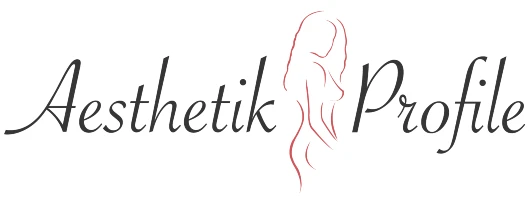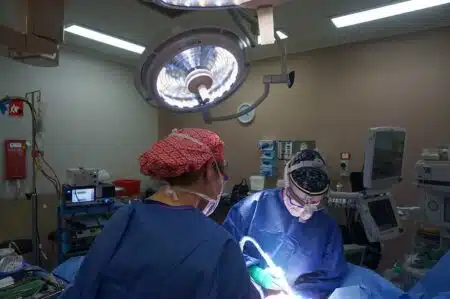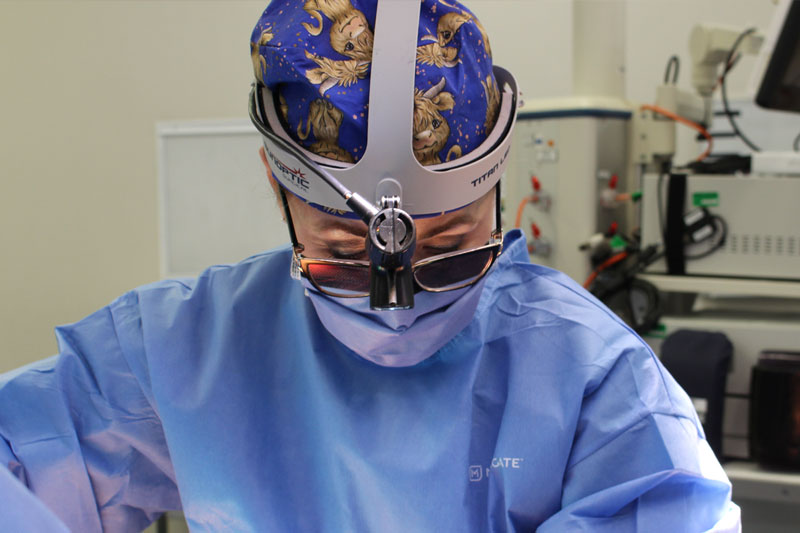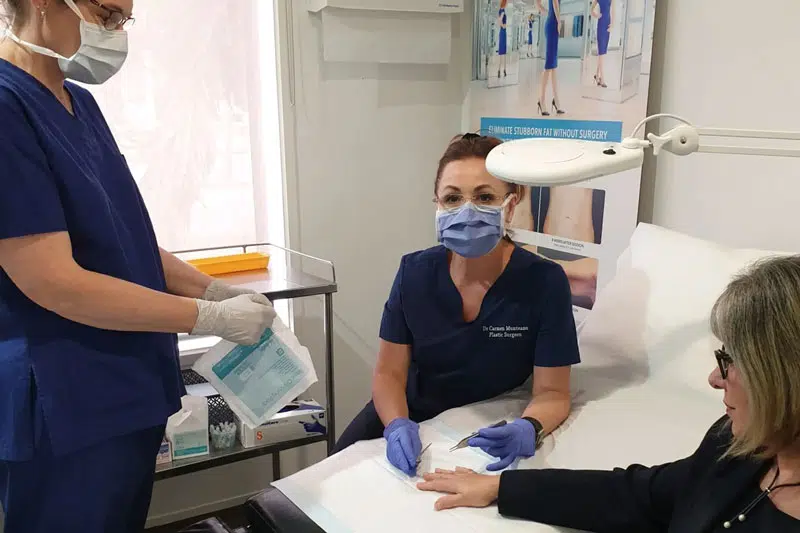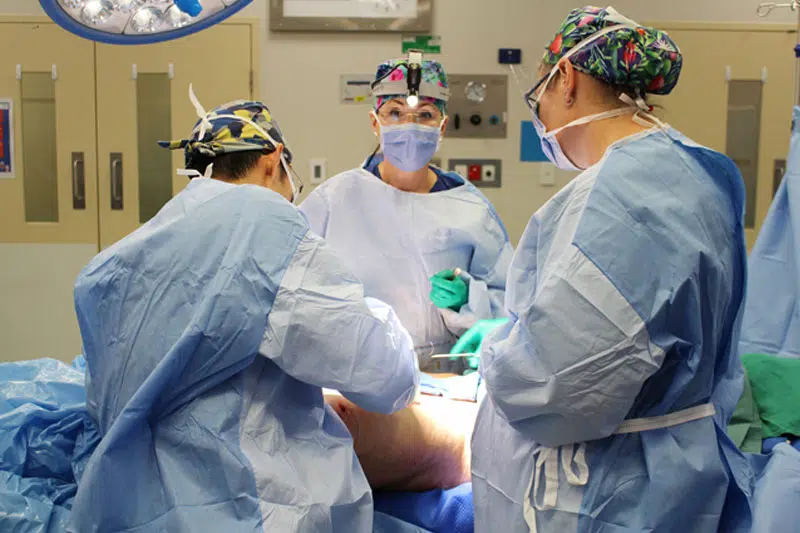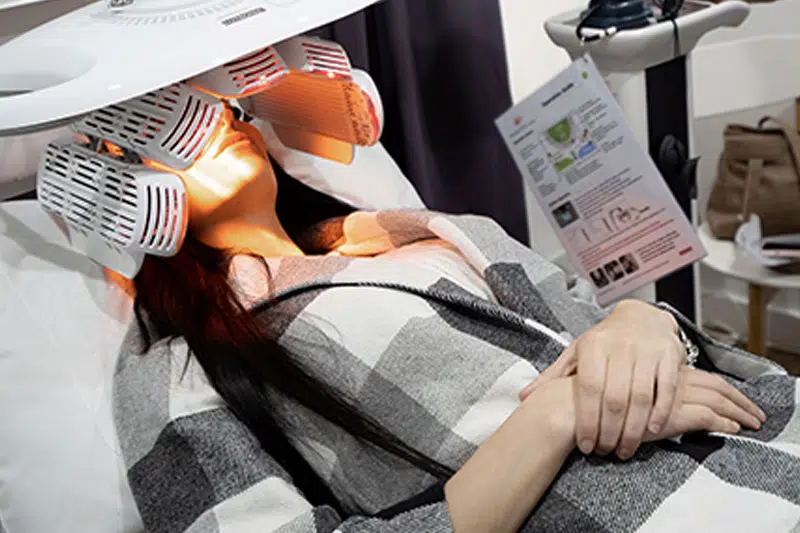.Maintaining a nutritious diet.
Surgery for Diastasis Recti – Repairing Separated Tummy muscles with Abdominoplasty
Many women split their tummy muscles during pregnancy and exercise alone usually fails to return the muscles back to normal. This results in an overhanging belly, or pooch, which can be rectified with Full Tummy Tuck- abdominoplasty surgery by Dr Carmen Munteanu – Female Plastic Surgeon in Melboune, Australia.
Diastasis recti, also known as separation of the abdominal muscles, is the medical term for this condition in which there is partial or complete separation of the rectus abdominis muscle. It is a condition common during and after pregnancy, with estimates that 60% of women suffer from diastasis recti during this period. In addition to pregnant women, diastasis recti in men can occur, especially those who lift heavy weights improperly.
Rectus Abdominis – The Muscles of the Abdomen
Rectus abdominis, known more commonly as the ab muscles are paired abdominal muscles that meet at the midline of the stomach and are separated by a central band called the linea alba.
Rectus abdominis are key tummy muscles that help in:
- Proper posturing
- Flexing lower spine
- Forceful respiration
- Maintaining abdominal pressure and protecting vital organs of the abdomen
- Generating pressure for defecation and urination

Causes of separated tummy muscles
Separation of the tummy muscles in females often occurs during pregnancy and/or during childbirth. Pregnancy and childbirth can drastically change a woman’s body.
As the uterus grows during pregnancy, the abdominal muscles also start stretching to accommodate the fetus. The appearance of stretch marks on your belly area is a natural sign that your skin is being overstretched, which is not the case inside the body. The two main panels of muscles down the middle of the abs start separating during pregnancy and delivery due to the strain caused by continuous stretching of the abdominal area. In some cases, the outstretched abdominal muscles will retreat to their original place, and in some cases, they will not. A bulge may indicate the presence of abdominal muscle separation, but a proper diagnosis must be made by a healthcare provider.
In men, separation of the abdominal muscles is rare but can occur, often due to improper exercise or lifting techniques.
Download Dr Carmen’s Guide to Post Pregnancy Surgery
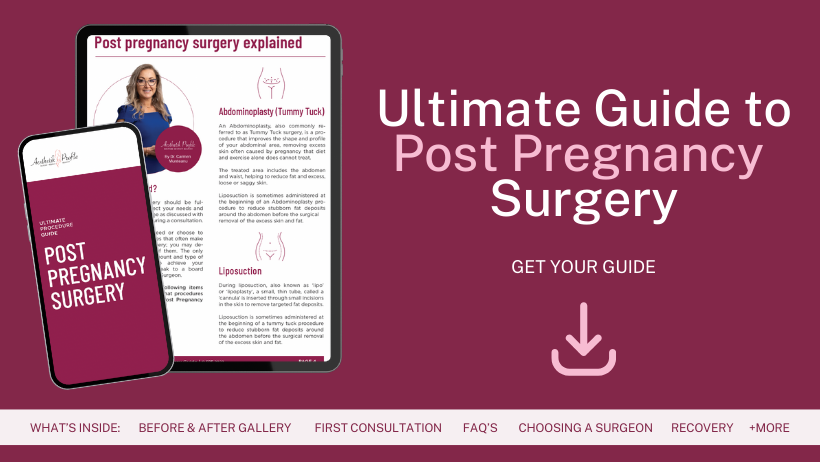
Symptoms and Complications of Abdominal Muscle Separation
Possible complications depend on the severity of the separation. Evaluation can be done either by your surgeon or by oneself through a DR-self test, where a gap smaller than 2.5cm, which is not deep, can be prevented from widening by undergoing core rehab exercises. However, any gap greater than 2.5 cm tends to pose more health concerns.
Some women may not face any issues from the separation of their tummy muscles, but for others, common problems may include:
- Backache
- A weakness of the core muscles can affect exercise capability.
- Constipation
- Leakage of urine
- Bladder, rectal, or uterine prolapse
- Bloating
- Bad body posture
- Obtruding bulges
- Irritations of the skin
Diastasis Recti Surgery – Abdominoplasty or Full Tummy Tuck
Diastasis recti surgery is a surgical method of bringing the separated abdominal muscles back together, typically considered when non-invasive treatments are insufficient.
It can be performed either singly or in conjunction with abdominoplasty in cases where surplus fat and skin are to be removed. In severe cases of diastasis, there could be the presence of an umbilical hernia, which will be corrected during the procedure.
General anaesthesia is utilised on the patients for this procedure. An incision will be made between the navel and the pubic area horizontally.
Skin and tissue that are above the abdominal fascia will be undermined and raised to the navel. Another incision is created around the umbilicus to free the umbilical stalk. The dissection of the abdomen and subsequent elevation will continue until it approaches the base of the rib cage.
To provide enhanced support to the separated abdominal muscles, these will be joined together using non-dissolvable sutures at varying depths. Upon completion of the strengthening of the muscle, the umbilicus will be reconnected to the outer skin; the abdominal skin will be drawn back to the pubic area, and incisions will be closed with the help of sutures.
Are you suitable for a Tummy Tuck – abdominoplasty to repair your Diastasis Recti?
Individuals who could potentially benefit from diastasis recti surgery are those who:
- Experience limitations in daily activities due to separated abdominal muscles.
- Have persistent abdominal protrusion that can not be addressed by diet and exercise alone
- Are already a year into the post-partum period
- For cosmetic or other reasons
Recovering after the surgery
You will require rest immediately after surgery, and many patients need at least two weeks off work; however, recovery times may vary depending on individual circumstances.
Swelling following the procedure can last up to a month after the surgery. So compression garments and abdominal binders need to be worn for at least a month.
You will have to abstain from bending improperly or lifting heavy objects for a minimum of two weeks up to three weeks after the surgery as it bears the risks of opening the wound.
The results following the surgery are mostly permanent, except in cases with excessive weight gain or subsequent pregnancy. The outcome of the procedure will be visible once recovery is complete. However, this can take anywhere from three months to a year.
Benefits of Diastasis Recti Surgery
Benefits of the surgery can include:
- Reduces low backache and urinary incontinence
- If an umbilical hernia is present, it will also be corrected
- Repairs your stomach muscles
Risks Associated with Surgery
Risks of the surgery can include:
-
The surgery can be costly, and costs vary depending on factors such as location and extent of repair.
-
The result obtained from surgery will be lost in case of a subsequent pregnancy
-
Re-opening of the incision internally or externally
-
An infection at the incision site, which can spread throughout the body
-
Loss of sensation in and around the incision or persistent pain
-
Loss of skin
-
Swelling that doesn’t recede with time
Patients who smoke or have various health conditions like diabetes, hypertension, obesity, and asthma have a comparatively higher complication possibility than other patients.
Alternatives to tummy surgery – abdominoplasty
Physical Therapy: If the gap of the diastasis recti is smaller than 2.5cm and not deep; this gap can be prevented from further enlarging by undergoing physical therapy. The physical therapist can teach you exercises to help strengthen the abdominal muscles and show you which exercises to steer clear of together with proper posture, mobility, and lifting technique.
There is no certainty that the teachings and implementation of the physical therapist’s advice will completely heal the situation, but this will re-strengthen your muscles in addition to decreasing any prospect of further deterioration. Apart from this, various support materials like supporting belts, braces, and waist trainers can also assist in holding the muscles in their original position.
Diastasis Recti FAQs – Frequently Asked Questions about Split Tummy Muscles
What is Diastasis Recti?
- Diastasis recti is an abnormal condition in which there is partial or complete separation of the rectus abdominis muscle that results in your belly sticking out from in between the space created by the separation.
- It is common during and after pregnancy, with estimates that 60% of women suffer from diastasis recti during this period. In addition to pregnant women, it can occur in newborns and rarely in men mostly because of incorrect lifting techniques.
Can Diastasis Recti be treated surgically?
- Depending on the severity of the muscle separation, surgery may be necessary to fully repair the condition; however, mild cases can sometimes improve with physical therapy
Do belly bands help with Diastasis Recti?
- Belly bands do help in holding the abdominal muscles in their original place during pregnancy and after childbirth. But these belly bands and other support materials cannot reposition the abdominal muscles completely but will provide you with ample support in reducing the likelihood of diastasis recti.
How can I heal Diastasis Recti naturally?
- In case the gap of the diastasis rectal is smaller than 2.5cm and not deep, to prevent further enlargement numerous steps can be taken.
- Consulting and performing various core strengthening exercises taught by a physiotherapist also following good body postures, mobility, and lifting techniques can drastically decrease the risk as well as the enlargement of the bulge.
- Maintaining a nutritious diet.
- In very rare cases, where the damage to the muscles is very minimal, you might not have to go under the surgery by following the above tips, but in most cases, it will be necessary for a complete recovery.
How long does it take for Diastasis Recti to close?
- Recovery will depend on various factors, ranging from patients’ post-surgery activity, healing activity, and various other factors. The duration of recovery after surgery can differ widely, typically taking anywhere from a few months to a year.”
What problems can Diastasis Recti cause?
- Diastasis recti in some women cause no symptoms and the muscles of the abdomen revert to their original position, but in cases where the muscles cannot revert to their original position post-childbirth the following problems can be encountered:
- Backache.
- A weakness of the core muscles, which can hinder exercise effectiveness.
- Leakage of urine.
- Bladder, rectal, or uterine prolapse.
- Bloating
- Bad body posture.
- Obtruding bulges.
- Irritations of the skin.
Which Exercises Can Help Improve Diastasis Recti?
- Exercises that engage your core muscles are relatively effective at improving the state of the overstretched abdominal muscles. Such exercises require you to breathe properly and pulling your abdominal muscles towards you than projecting them outwards. It includes:
- Planks
- Upright pushups.
- Squatting with contact to a wall.
- Pelvic floor tilts.
- Crunches, double-leg lifts, and any yoga moves that build pressure on the abdominal muscles are to be steered clear from.
Does a tummy tuck- abdominoplasty repair Diastasis Recti?
- Yes, a tummy tuck – abdominoplasty can repair diastasis recti while also removing the surplus fat and skin from the stomach. Also, diastasis recti surgery is regularly performed alongside a tummy tuck or abdominoplasty.
What are the benefits of diastasis recti surgery?
- Benefits of the surgery can include:
- You can reacquire a smoother body contour.
- Greatly reduces low backache and urinary incontinence.
- If an umbilical hernia is present, it will also be corrected.
- Repairs your stomach muscles.
How long does the result of the Diastasis Recti surgery last?
- The result of the procedure is usually permanent, except in cases where the patient either gains excess weight or has a subsequent pregnancy after the procedure.
Where can I see diastasis recti before and after pictures?
- Schedule a consultation with Dr Carmen now to discuss treatment options and review before-and-after photos of diastasis recti cases. Book your consultation today to repair your separated abdominal muscles or rectus divarication with Dr Carmen Munteanu.
Further Reading about Abdominoplasty Surgery with Dr Carmen
- Read Dr Carmen’s Blog about Tummy Tuck Medicare – Abdominoplasty
- Read Dr Carmen’s Blog about Medicare for Diastasis Recti
- See Dr Carmen’s Tummy Tuck (Abdominoplasty) Before and After Australia Gallery
- Read Dr Carmen’s Abdominoplasty Page
- Read Dr Carmen’s Blog about Recovery after Tummy Tuck – Tips, Timeline and FAQs after Abdominoplasty
- Read Dr Carmen’s Page about Fleur De Lis Abdominoplasty Melbourne
Medical References:
- Diastasis Recti Repair – Procedure Overview, Cost, Recovery, Before & After | AEDIT
- Diastasis Recti Surgery | Procedure Overview | Will You Need It? – RYC (restoreyourcore.com)
- Diastasis Recti Surgery: Preparation, Recovery (verywellhealth.com)
- Diastasis Recti: Treatment and Prevention (verywellfamily.com)
- What Is the Recovery Time for Diastasis Recti Surgery? Risks (medicinenet.com)
